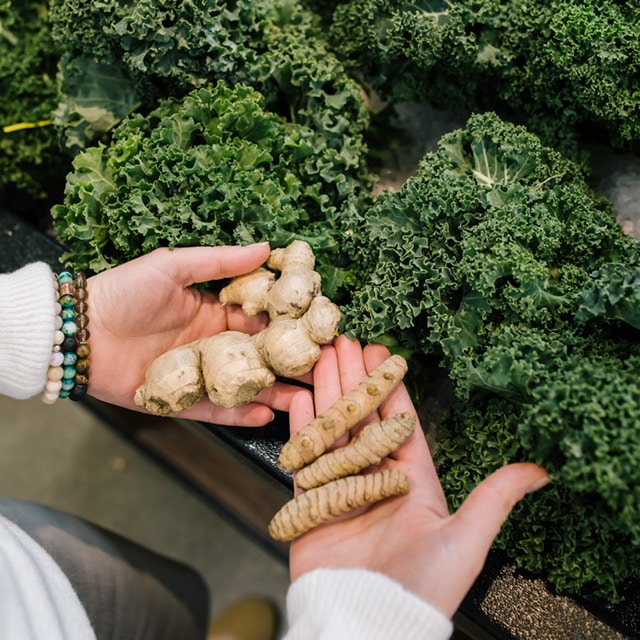5 foods to help reduce chronic pains, inflammation, and exhaustion

Last week I had the privilege of speaking to a great crowd at Goodness Me. The topic for discussion was chronic pain. There are 5 foods that can help reduce chronic pain, inflammation and exhaustion. 20% of Canadians suffer from chronic pain, that’s 6 million of us. Treatment options can often feel limited to drugs and surgery. However, increasingly more research is supporting a self-directed approach to care and a multidisciplinary approach to care for those struggling with chronic pain.
A properly functioning nervous system is a tremendously important part of this routine. Every day in practice we work to address the dysfunction of the nervous system as it relates to musculoskeletal concerns and overall levels of pain and declining health. Diet also plays an essential part in pain perception and modulation as well as reducing chronic pain and inflammation. Rather than taking foods out of our diet, it can be much more feasible to add things to our diet. These five foods can have a drastic impact on overall levels of pain and health in general.
- Olive Oil
Olive oil can reduce inflammation. Oleocanthal is the particular antioxidant in olive oil that has demonstrated anti-inflammatory effects similar to ibuprofen.
Oleic acid, one of the fatty acids in olive oil, has been associated with reducing inflammation and some beneficial effects on genes associated with cancer production.
Olive oil usage, even at high levels, has NOT been shown to cause weight gain. The best way to benefit from olive oil is to drizzle it on salad or vegetables in its raw form.
- Turmeric and Curcumin
Tumeric has been touted as one of the most nutritionally dense foods in existence. Curcumin, the active form of the spice, is so potent that it matches the effectiveness of some anti-inflammatory drugs. The most significant effects are seen with supplemental curcumin. However, using Tumeric several times per week in curries and other dishes will have a positive effect.
- Tart Cherries
Antioxidants in cherries called anthocyanins have been shown to help reduce pain significantly. Anthocyanins have also been realized to help to block inflammation and inhibit pain enzymes. Like curcumin and omega-3 fatty acids, anthocyanins have shown to have effects as strong as anti-inflammatory drugs.
- Ginger
Anti-inflammatory properties, anti-cancer properties, and antioxidant properties.
- Omega 3 fatty acids
Wild salmon, mackerel, cod liver oil all contain high levels of omega-three fatty acids. Fish oil has been shown to help with back pain specifically and has multiple anti-inflammatory effects. A 2010 meta-analysis found that fish oil significantly decreased joint tenderness and stiffness in RA patients and reduced or eliminated painkiller usage https://www.arthritis.org/living-with-arthritis/treatments/natural/supplements-herbs/guide/fish-oil.php
Adding these foods into your diet is an easy way to help reduce overall levels of inflammation and generally increase health. Additionally, regular chiropractic is an excellent addition to your health and wellness routine. Not only does chiropractic care help with pain reduction, whether acute or chronic, it has also been suggested that regular chiropractic care may help in the prevention of future pain episodes.
In good health,
~ Dr. Claire




